Recommended Posts
JohnMitchell 14
I think too much swooping goes on in heavy (or light) traffic by people who don't have the skills to avoid collisions. What used to be one of the most laid back parts of the skydive, the canopy ride, has now become the most dangerous for me.
billvon 2,380
>me and blindsides me at 200 feet above the ground.
Yep. That's why I try to stick to the sides of the landing area, so I am in the "target" area for a shorter time - and have a bit more visibility out to the side. But that won't prevent such collisions, just reduce their likelihood.
Beverly 1
Quote
You are the only person getting worked up about this.
You are the only person who doesn't think what I'm saying is logical.
No dude, there are lots of people that are not agreeing with you and not everyone thinks that everything you says is logical.
Lots of people are saying maybe you need to listen more than you speak.
We have 2 different landing patterns at our club and there are pro's and con's on both.
This is not just to seperate Swoopers, but it seperates Pro rated jumpers and non-pro rated jumpers.
It changes depending on the wind direction.
It is quite complex for new jumpers, but a basic explanation while the load is at boarding point helps lots to ensure everyone knows how to approach and land safely.
We normally have people that land in the same strip that swoop and some that just land straight in approach and some older skydivers that toggle spank a 180.
I do lots of jumps with the same people on the load and we get to know eachother quite well.
The best is to know when to go for the bigh turn or when to land in an alternative landing area, which I do often.
We have swoop gates up every weekend we jump and if there is traffic I will still go land in the student area.
Many of the training swoopers are landing at the pond, which is a it away from the main landing area.
But the majority of people are landing together on a piece of lawn.
In fact we have some swoopers that land in the student area as they have not got a pro rating...
The idea is to be aware of the people around you all the time and see where you can fit in.
My next comment is on the boogie issue.
I was on a few big loads over the holidays.
One senior guy slid in on his ass to avoid Dave Morris on landing after doing a 270 turn. My comment was "why are you still doing big turns when there are so many canopies in the sky" He agreed and then started smaller chips in to land.
But on one of the bigger C130 loads, we had a guy spiraling down into the bevy of canopies and taking me out.
He has around 500 jumps and said that he thought I had flown into him.
Unfortunately for him it was all on camera...
Luckily I grabbed brakes and flared whie I was being spat out on a collapsed canopy and it re-inflated.
There is too much emphasis placed on swoopers vs non swoopers, as all canopies can cause accidents.
Even low jump number guys can cause major accidents under canopy.
Keep your eyes open, have a plan B and abort and land elsewhere if need be.
Quite simple really.
Oh, and leave your ego at home!
I think true friendship is under-rated
Twitter: @Dreamskygirlsa
fcajump 153
One thing that must also be kept in mind...
You ask me (big canopy, flying a "normal" pattern*) to look out for you swooping from above and behind (my blind spot), while I am also setting up for a landing in the peas and supposed to be focused on the lower canopies that have the right of way... Ok. I will do what I can. I am not comfortable with us mixing patterns* and my ability to assist is hampered by: my slower canopy, my lower altitude, and your approach being from my blind spot. But I will try to split my attention to assist.
What about the other canopy in the air with 40 jumps? How much chance does he have of helping stay out of your way? Funny, since he and I (and 80% of the rest of the fliers have no problem with maintaining separation since we are both (all) flying the standard pattern.*
I would say that either separate by time or by location, but flying a non-standard pattern is your problem and should not be mine or newbie's.
*Pick up any aviation text (powered or not, aircraft or ram-air parachute) and you will see the SAME standard traffic pattern for landing. Only variations are turn points, left vs. right hand, wind direction and in some cases parallel landings. Once in pattern, there are NO turns away from the landing area. In most forms of aviation, this is strongly enforced because it confuses the rest of the pilots in pattern with you. If this is a surprise, please review your own FJC notes.
If you wish to fly a different pattern, fine. We can (and you should) discuss it with ALL those who will be in the air with you. But it is NOT a standard pattern.
If you wish to establish a time or location where non-standard patterns will be flown, GREAT! That will help both the 40 jump novice and me stay out of your way. And I will help you in your efforts to establish this time/place for you to do so. But on a normal load (or worse a boogie) with a mix of experiences, most of whom are flying and expecting others to use a standard pattern, this is not safe for either of us.
To those who have lost friends / family recently, my most sincere condolences. To those who join with me back in the skies this year, please work to keep the landing pattern safe for all... including those for whom a plain and simple landing is itself a relatively new experience.
JW
AFFI 0
Skydiving Priorities: 1) Open Canopy. 2) Land Safely. 3) Don’t hurt anyone. 4) Repeat…
QuoteFunny, since he and I (and 80% of the rest of the fliers have no problem with maintaining separation since we are both (all) flying the standard pattern.*
While I agree with the seperation of landings I just want to point out that the above statement is untrue most of the time in my experience. How many pilots jumping 'regular' canopies do you see on level, landing at the same time on any given weekend.....typically MOST of them. Want to see it get even worse go to a boogie. Want to see it on a bizarre level, go to a big way.
While not always possible to land at different times, it's not uncommon to see landing 'spurts' where there are a bunch of people landing at once followed by 20 seconds of nothing, and then repeated. That 20 seconds of nothing, if used correctly, can really help landing congestion.
Seperation is everyone's issue. It's highlighted by higher closing speeds but to believe that it's only a swooper/non-swooper issue is folly IMO.
Blues,
Ian
Dave
CSpenceFLY - I can't believe the number of people willing to bet their life on someone else doing the right thing.
Pulse 0
The term 'pattern' implies predictability. Some jumpers making 90's and others 270's does NOT make for great predictability. Low rate of turn 270's can take up a lot of airspace. 'Snap' 270's are whipping the pilot into their blind spot. There's just no fool-proof method to do this safely in the pattern environment. If we're then going to entertain the thought of how downwinders will fit into the pattern....forget it!
I do a slow carving turn and even that isnt that slow on my 99 loaded at 2.1
Cheers
Dave
CSpenceFLY - I can't believe the number of people willing to bet their life on someone else doing the right thing.
Quote
Yes. We will have to disagree on this one. I think if a person/skydiver is actually willing to sit out, observe and evaluate the loads landing, it is possible to predict who is going to do high performance maneuvers based on how they set up.
Even if that were true, there is still a question of what you do in that case. Suppose you just turned onto the base leg in your normal straight in approach. You happen to notice someone above and in front of you about to perform a 270 . Maybe sees you maybe not.
What do you do?
QuoteQuote
Yes. We will have to disagree on this one. I think if a person/skydiver is actually willing to sit out, observe and evaluate the loads landing, it is possible to predict who is going to do high performance maneuvers based on how they set up.
Even if that were true, there is still a question of what you do in that case. Suppose you just turned onto the base leg in your normal straight in approach. You happen to notice someone above and in front of you about to perform a 270 . Maybe sees you maybe not.
What do you do?
What do you do if you are standing in the landing area and someone comes swoopoing right at you at a high rate of speed?
~~~~~~~~~~~~~~~~~
Peace and Blue Skies!
Bonnie ==>Gravity Gear!
billvon 2,380
>someone comes swoopoing right at you at a high rate of speed?
Stand still. If he doesn't correct, wait until the last minute then dodge.
The circumstances are a bit different there, though. If he is facing you, chances are he sees you. If that guy just started his 270, he probably did not. You have to look away from the landing area to do a 270.
QuoteQuoteQuote
Yes. We will have to disagree on this one. I think if a person/skydiver is actually willing to sit out, observe and evaluate the loads landing, it is possible to predict who is going to do high performance maneuvers based on how they set up.
Even if that were true, there is still a question of what you do in that case. Suppose you just turned onto the base leg in your normal straight in approach. You happen to notice someone above and in front of you about to perform a 270 . Maybe sees you maybe not.
What do you do?
What do you do if you are standing in the landing area and someone comes swoopoing right at you at a high rate of speed?
The two situations are not equivalent. When you see someone swooping at you on the landing area, they've already committed to their final trajectory. If you see someone setting up for a 270, it's very difficult to tell whether they'll ultimately be screaming directly at you or 50 feet to your right. If you try an avoidance maneuver, it's pretty much a crap shoot whether you'll be "avoiding" right into their path or not.
On the other hand, if you wait until the 270 fully completes to see what's what, it's very unlikely you'll have time to both evaluate the situation and make the proper response.
Pulse 0
QuoteQuoteQuote
Yes. We will have to disagree on this one. I think if a person/skydiver is actually willing to sit out, observe and evaluate the loads landing, it is possible to predict who is going to do high performance maneuvers based on how they set up.
Even if that were true, there is still a question of what you do in that case. Suppose you just turned onto the base leg in your normal straight in approach. You happen to notice someone above and in front of you about to perform a 270 . Maybe sees you maybe not.
What do you do?
What do you do if you are standing in the landing area and someone comes swoopoing right at you at a high rate of speed?
I think yes, you can usually pick out those who are setting up for high-speed landings. But what if you're wrong? I've been in groups where a few of us have been setting up at the same time. And though I'm usually right on how people are setting up. Every once in awhile I'm wrong. They may have to change their plane for some reason.
As for being in the landing area. I like people to stay still when their in the landing area. But it begs the question, why are you there? If you're out there shooting video or something, or even walking back from your own landing, that's the risk you run. The skydive isn't over until your packing.


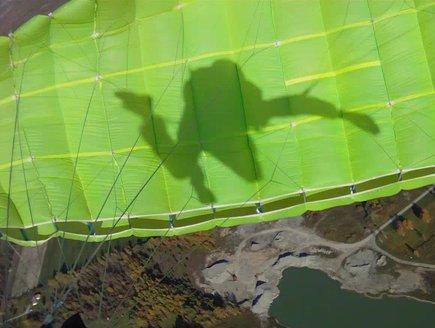
.thumb.jpg.4bb795e2eaf21b8b300039a5e1ec7f92.jpg)

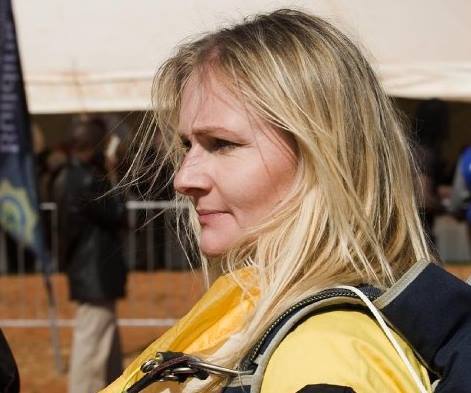
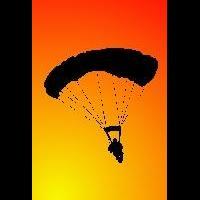
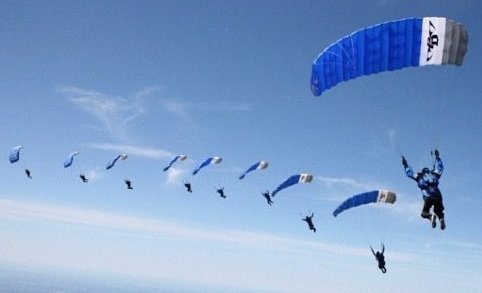
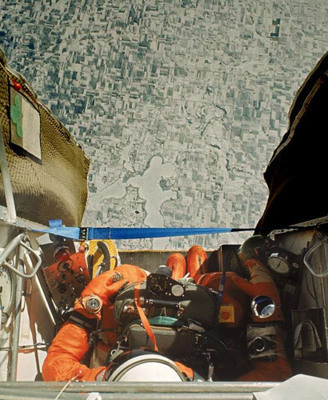
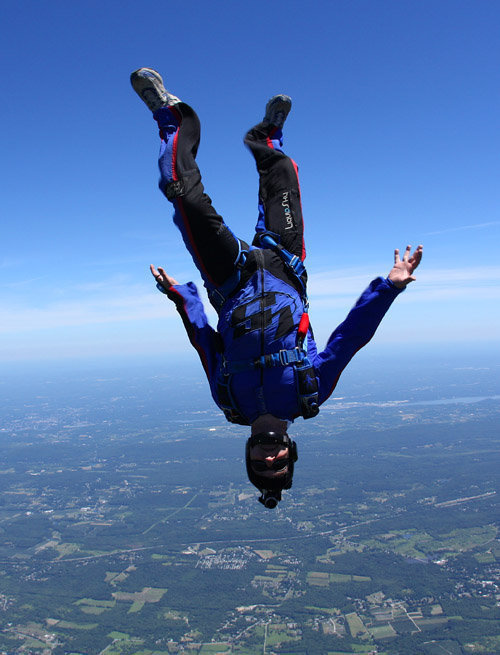

>the edge of the pattern.
I generally do both. Most of my patterns involve 90's to land at the edge of the grass, and I generally try for the grass closest to the downwind leg (so I have to cross fewer people on the base leg.) This helps avoid the people who look like they're setting up for a 90 on the far side, but are really setting up for a 270 on the nearer side. On occasion my last turn will become a 180 when the base leg has to be compressed for spacing.
I don't feel confident being able to predict what people are going to do at a boogie, so I try to avoid the issue by avoiding the airspace they are likely to use.
Share this post
Link to post
Share on other sites